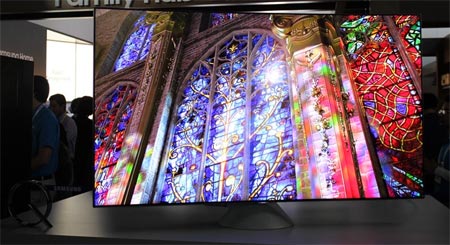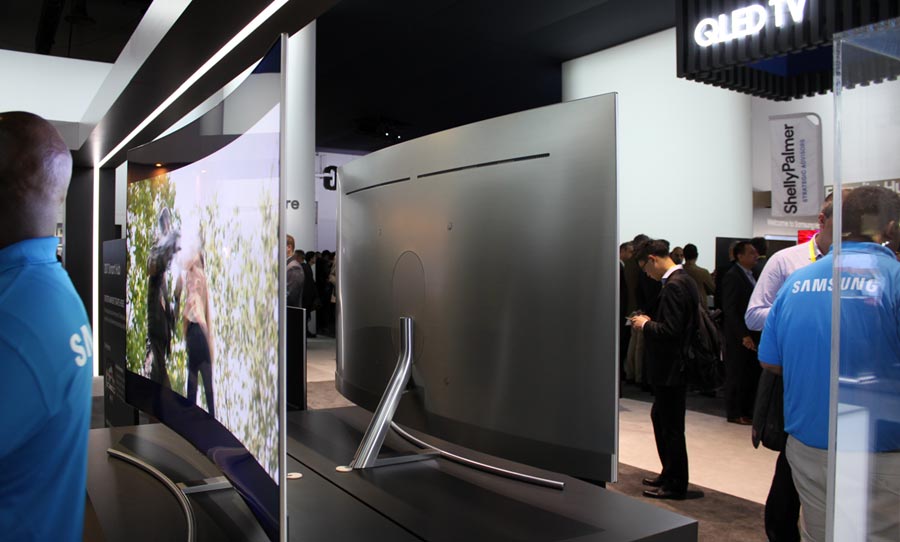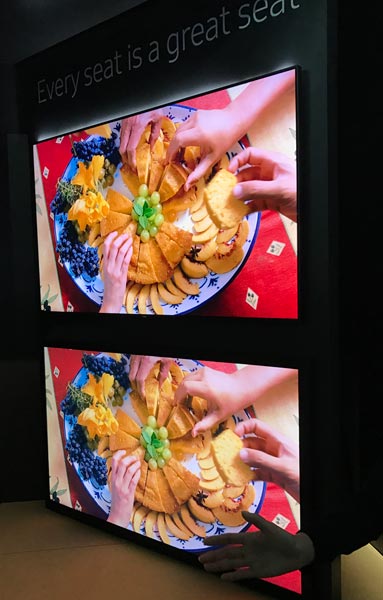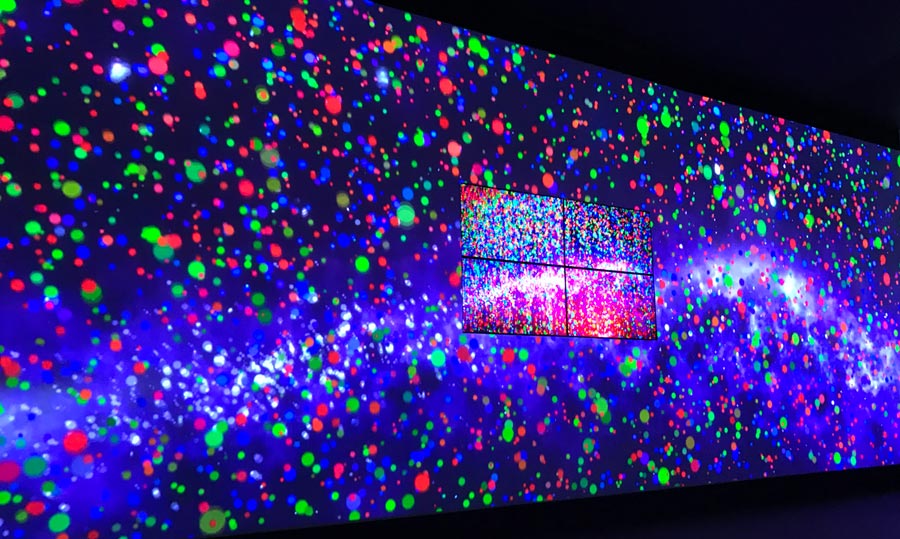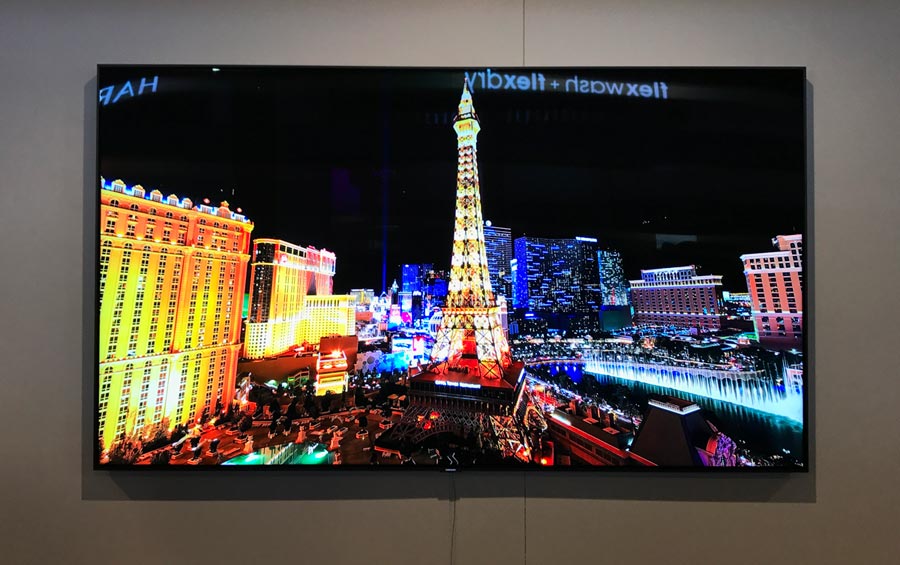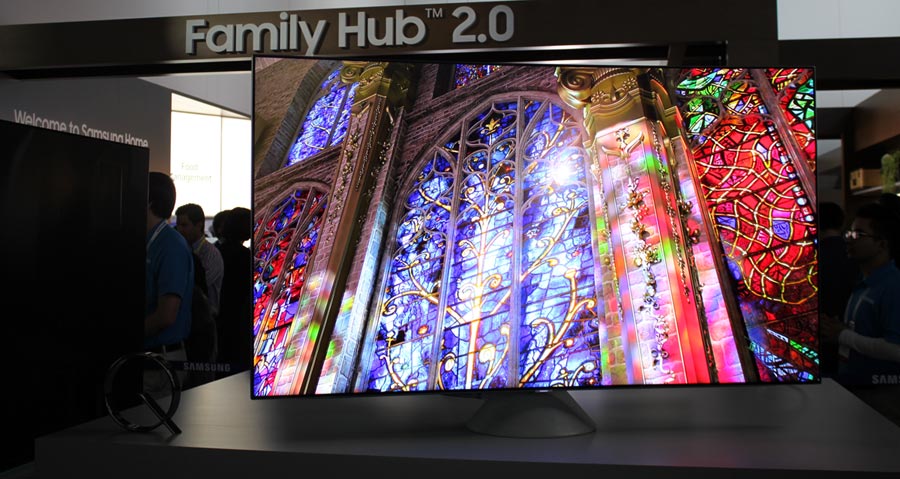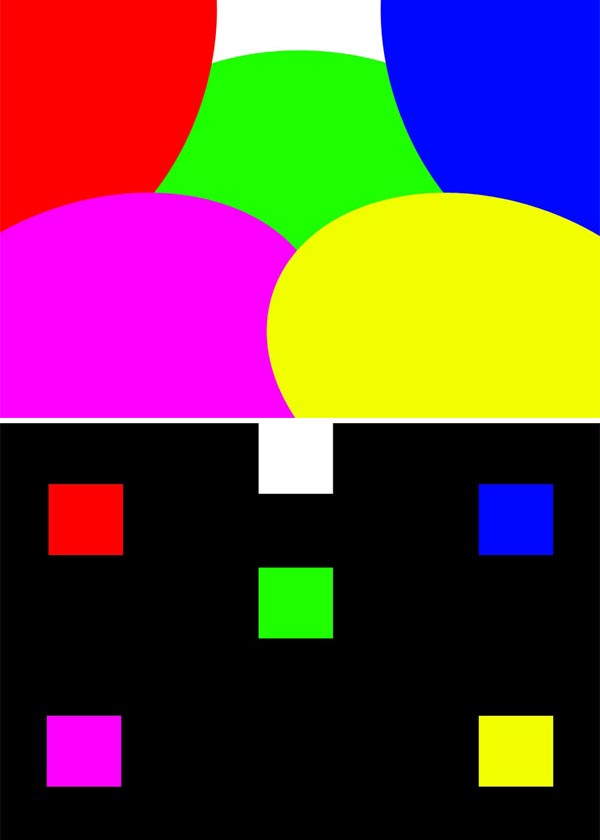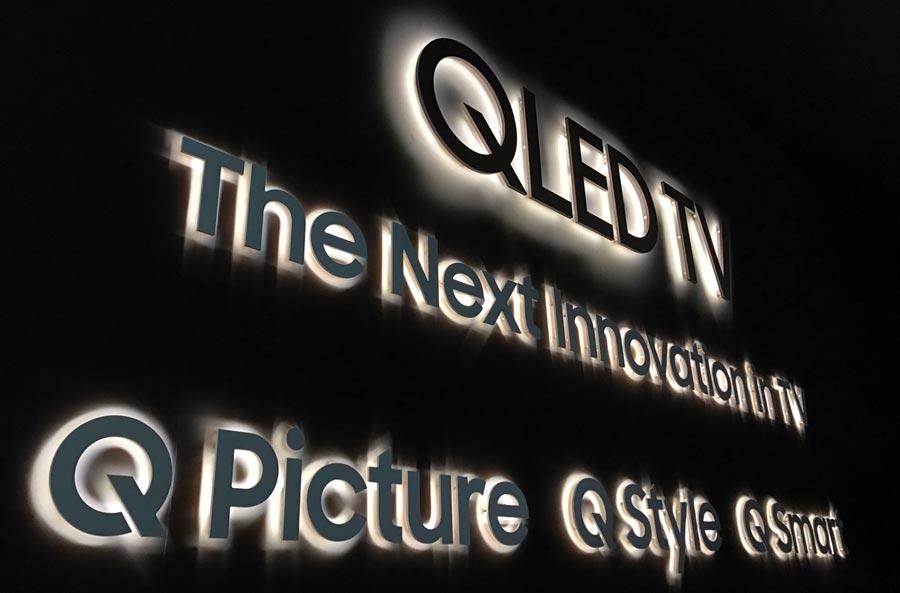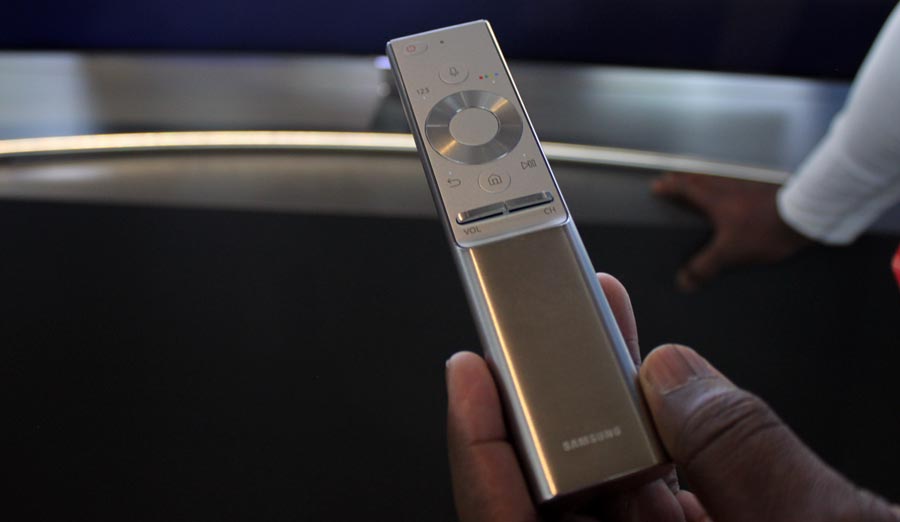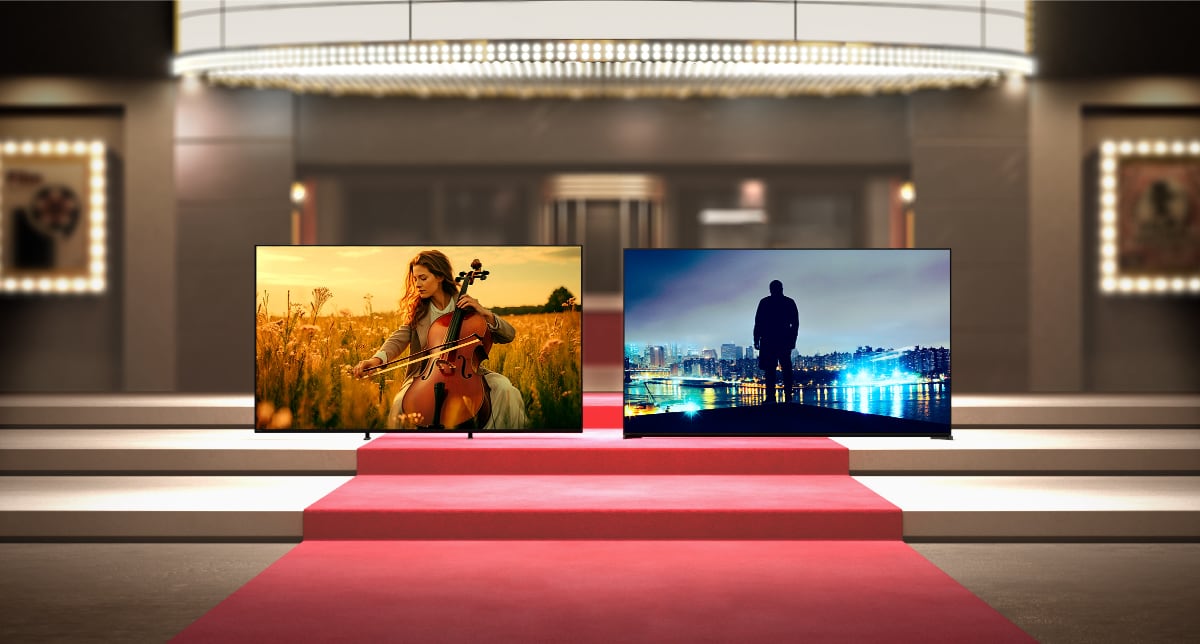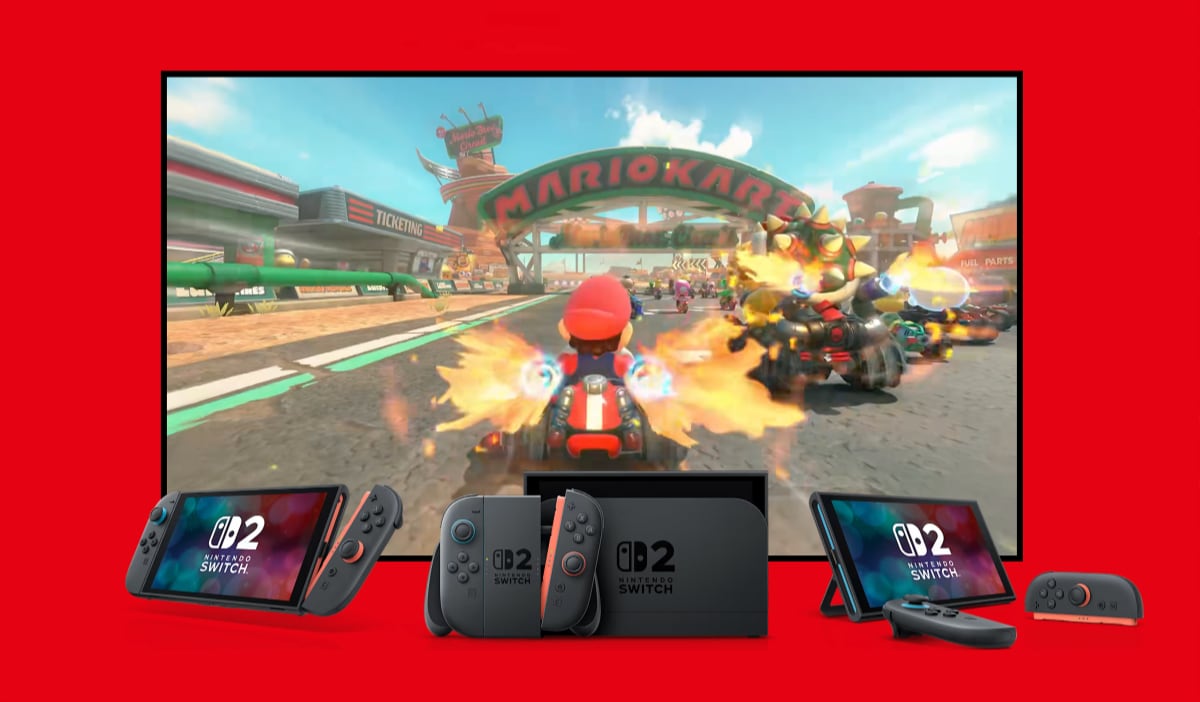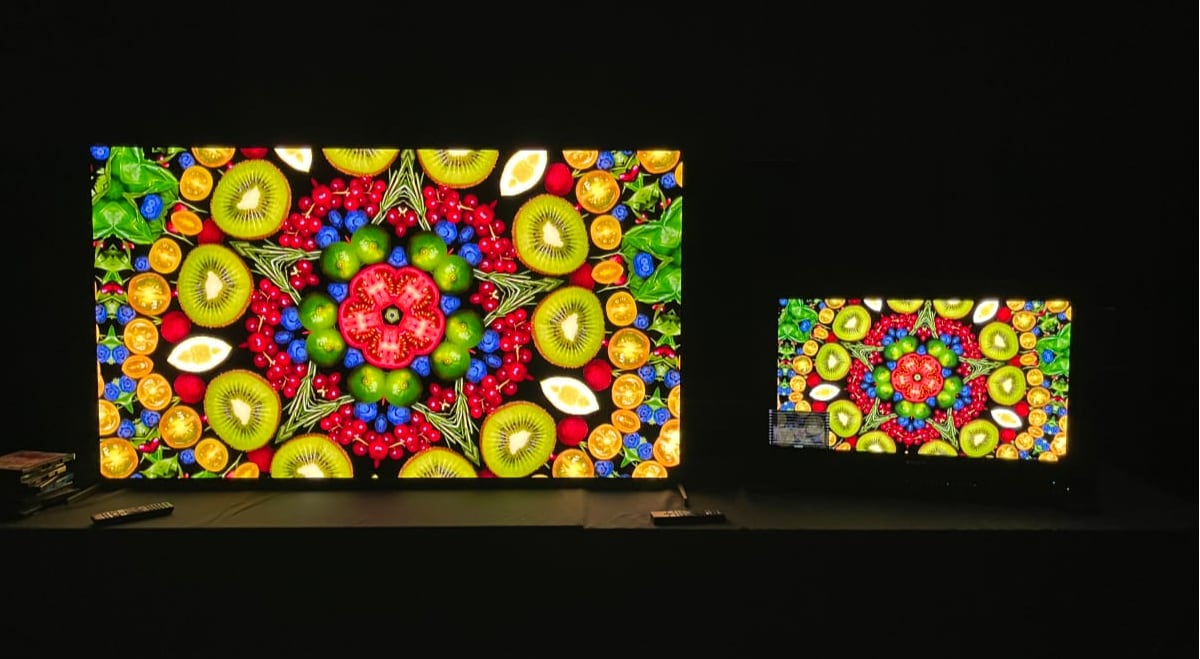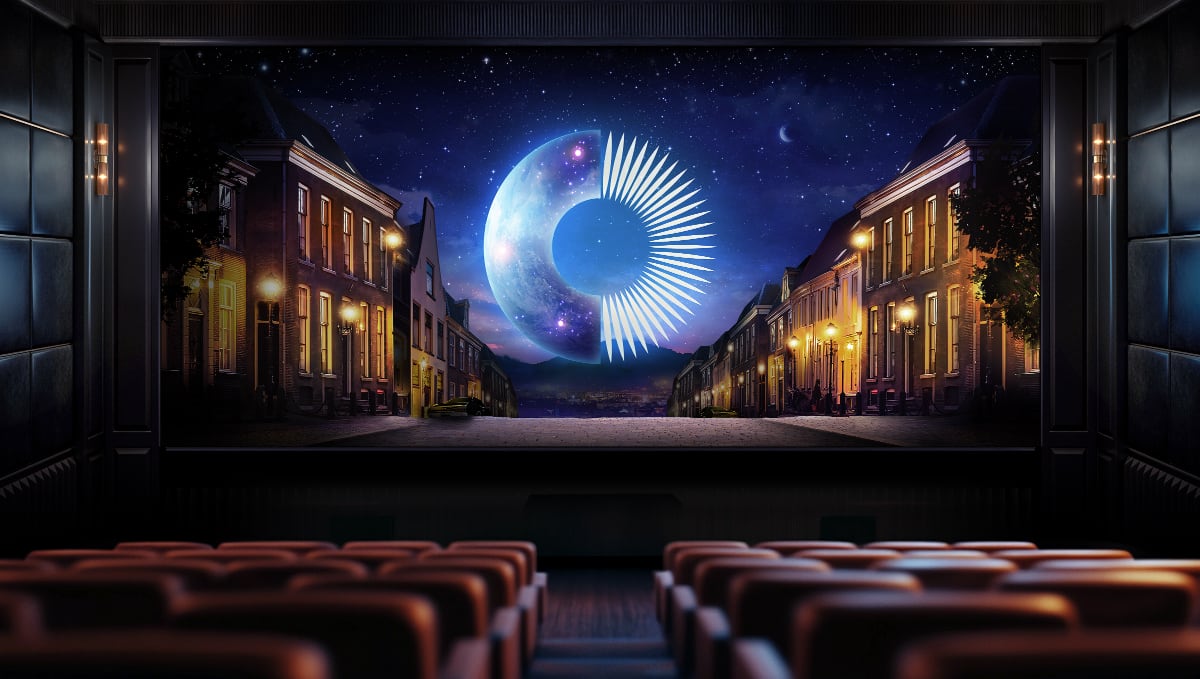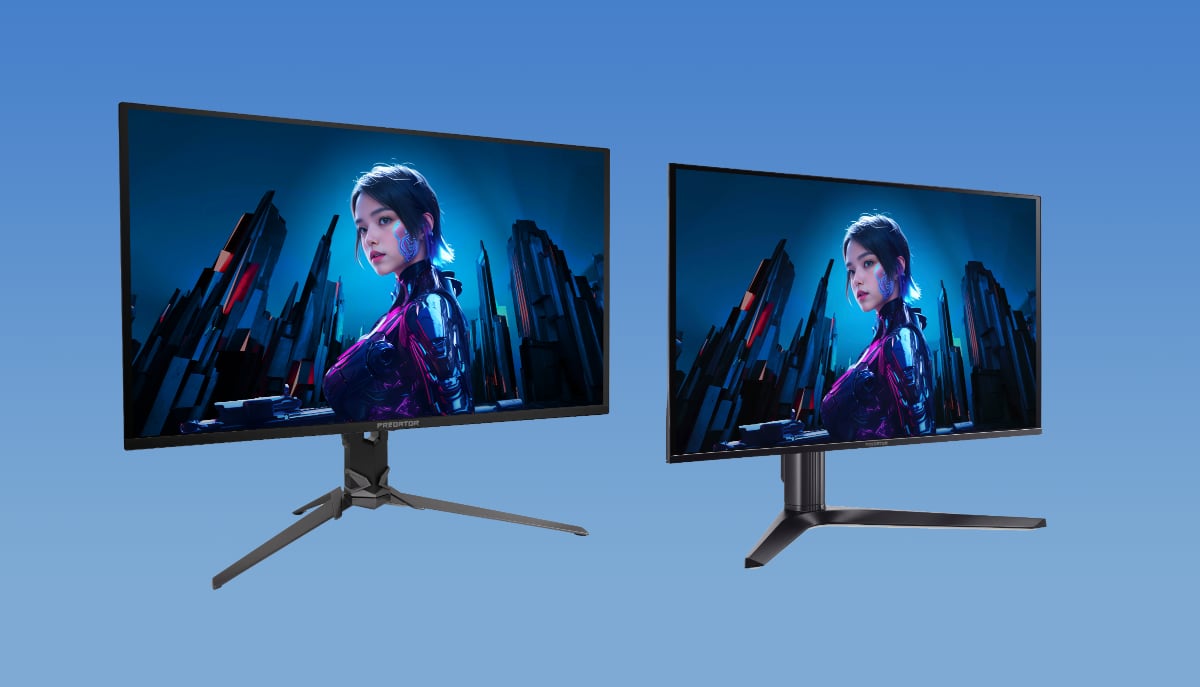Hands-on with Samsung's 2017 "QLED" TVs (& technical information)
At CES 2017, Samsung launched its first “QLED” TVs in the form of Q9 (flat!), Q8, and Q7. However, Samsung’s QLED is not exactly the breakthrough that many of us had hoped for. FlatpanelsHD spoke to Samsung about the new technology and had a chance to examine the TVs more closely. Here are our first impressions.From LED to SUHD to QLED
The first thing that you should know is that, in 2017, QLED = LCD with quantum dots. While there has been some chatter about an entirely novel self-emitting display technology, internally dubbed QLED, this is not it. These are LCD panels. Nothing more, nothing less.
Samsung tells us that it has chosen to brand the new LCDs “QLED” because they represent such a big step forward. What constitutes “big” is of course a matter of perspective. The company added that it sees QLED as a term that refers to an “entire category of quantum dot products”, meaning that it may even be used on competitors’ TVs.
In the past, the South Korean company has referred to as LCD initially as LCD, then LED, then SUHD, and now QLED. Typically, the industry has had a clear nomenclature to define a display technology by the active element used to regulate grey tones. Even if you decide to play by Samsung’s rulebook, it is confusing that its marketing division has switched from talking about the active element (LCD) to the backlight unit (LED) to the resolution (SUHD) to an enhancement film + backlight unit (QLED). In 2009, the UK Advertising Standards Authority ruled Samsung’s use of LED “misleading”. In 2015, when Samsung launched SUHD, few seemed to care. In 2017, Samsung appears to be given free reign.
Here is Samsung’s CES presentation, just in the case you want to see for yourself.
Nevertheless, there are still 2 important technical developments over the 2016 LCDs.
The first development pertains to viewing angles. In the 2017 LCD panels, Samsung has split each pixel into two (thanks to David Mackenzie of HDTVTest for his macro shots). This technique is known in the industry as a dual-pixel structure and has been demonstrated in the past, mostly as prototype displays. Samsung is using it to improve the viewing angles markedly.
But does that actually mean that Samsung has developed a new LCD panel type (besides VA, IPS, TN)? No. Like with general display technology, display engineers have a very clear nomenclature for determining what constitutes a new LCD panel type, and for LCD panels it comes down to how the liquid crystals are aligned inside the cells – not the subpixel layout. When we asked directly about if these are still VA LCD panels, Samsung’s Korean engineer in charge of the technical presentation answered “yes”.
The important thing here is that the new structure improves viewing angles quite dramatically and it looks like Samsung may actually have eliminated one of the biggest drawbacks of VA LCD panels. Of course, it is hard to comment on any potential negative consequences of this new pixel structure but we will examine that more closely in a later review. We have tried to capture the improved viewing angles in the photo below (top: 2017, bottom: 2016).
The second development pertains to the quantum dots, or more specifically the material used. While there was some chatter about Samsung having made the switch to the toxic cadmium material it does not appear to be the case. Samsung says that it is using a “new metal core” along with a “gradient shell made from ZnSeS”. Samsung says that the new metal quantum dot material has allowed it to deliver the “full DCI-P3 color volume”. We will get back to what color volume is in a second.
What Samsung has not done, is to reengineer display panel stack. There were rumors that Samsung in 2017 would replace color filters in front of the pixels with quantum dots, effectively moving the quantum dots from the back to the front – as near to the viewer as possible. This will not happen with this year’s line-up, according to our information. While Samsung refused to comment on the specific matter, competitors were adamant that this will not happen until 2018 at the earliest. Nanosys’ (Samsung's quantum dot supplier) technical roadmap appears to confirm this. While such a move could significantly improve color reproduction, brightness, and energy efficiency, Samsung obviously felt compelled to change the marketing name to “QLED” before it arrived. The next step after that is to completely remove the LCD panel from the equation but that will take several more years to accomplish.
So in essence, these are the two important changes that Samsung will introduce in its 2017 LCD panels. Does that justify renaming LCD display technology to “QLED”?Up to 2000 nits - with edge LED?
Samsung confirmed three new LCD TVs at CES 2017; Q9, Q8 and Q7. Only the two former were on display. Many of you will be happy to learn that the Q9 is flat. Q8 is still curved and Q7 will be available in both form factors.
Samsung says that its 2017 LCDs can hit a peak brightness of 1500-2000 nits, meaning that the Q9 can reach up to 2000 nits, whereas the others will be slightly lower.
Unfortunately, most of you will probably also be disappointed to learn that all three ranges are edge-lit. The LEDs are placed along the edges of the LCD panel, which means that they will not utilize true local dimming. This is a change from last year where Samsung launched a FALD (full array local dimming) model in the form of KS9800 (US) / KS9500 (Europe). Samsung may or may not decide to launch a 2017 FALD LCD TV later this year but when asked directly Samsung declined to comment.
So, even the flagship Q9 is edge-lit, making it more comparable to last year’s KS8000 than to KS9800.
To us, that is disappointing. Not only will it significantly hamper Samsung’s ability to compete for the picture quality crown, it makes us skeptical of those peak brightness claims. To use last year’s KS8000 as an example it could hit 1000 nits peak brightness on simple test patterns but subject it to true content and it would rarely, if ever, hit the same peak brightness when it was supposed to. Oftentimes, only half of that. Why? Because of the edge LED backlight (plus the LED’s boost, warm-up and cool-down mechanisms). It is really very simple when you think about it, and also easily observable and measureable. A VA LCD panel has a native contrast ratio of around 4000-6000:1. Let us say 5000:1 for the purpose of this example. Whenever a movie scene asks the LCD panel to go beyond that contrast ratio of 5000:1 (which is will often when watching HDR content), the TV has to make one of 2 choices:
What will the TV do? It depends on the settings in the picture menu. Manufacturers, including Samsung, have tried to overcome this issue by employing full array local dimming (FALD) and that has worked to some degree but again; the new TVs from Samsung are edge-lit so there are no real local dimming mechanisms at work.
In 2016, 1000 nits peak brightness was a theoretical figure that you would very rarely, if ever, benefit from (unless you bought the flagship KS9800). Maybe it will be different in 2017 but we are highly skeptical.
Samsung: Let’s talk color volume
At CES 2017, Samsung invited members of the press to attend its “TV Innovator Room”. In here it introduced the concept of “color volume”, first coined by Dolby Labs. Color volume is actually easy to explain if you are already familiar with the color gamut charts that have been used for decades.Imagine for example the Rec.709, DCI-P3 or Rec.2020 color spaces. Rec.709 is used for SD and HD content, whereas DCI-P3 and Rec.2020 are both tied to HDR content. These color gamuts are typically depicted with a 2D representation of how large a percentage a given TV can reproduce of the color space. However, this 2D graph only represents the color space at a single luminance level, for example 100 nits. To see how the TV reproduces all colors at all luminance levels (from the darkest to the brightest scenes) “color volume” represents the same color gamut with luminance added as the third axis for a 3-dimensional graph. This gives you a more accurate way to measure color reproduction.
A 3D representation of color volume looks something like this:
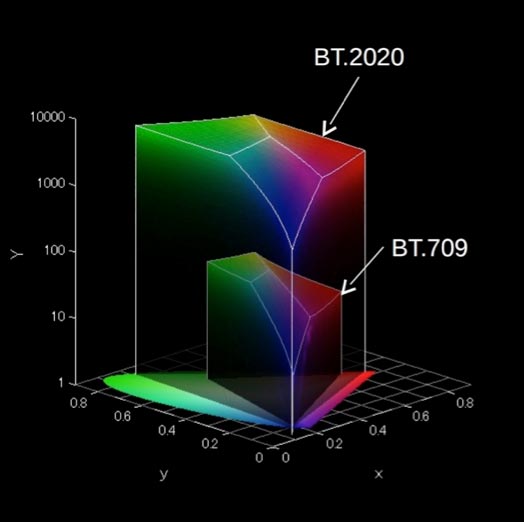 Image credit: Sony
Image credit: Sony
Samsung and CalMAN gave a live demo of its Q9 model versus a “conventional OLED” that demonstrated how Q9 was able to achieve a significantly larger color volume because of its ability to reproduce higher brightness. We were not allowed to take pictures during the demo so as best as I remember I have tried to draw the testing pattern (image on top, right) that Samsung/CalMAN used for the demo.
APL = Average Picture Level
Top: Samsung’s color volume test pattern
Bottom: Example of representative color volume test pattern
This is the concept of APL (Average Picture Brightness), which specifies the average amount of brightness in the image. 100% APL means a full-white image whereas 0% APL means a full black. 50% APL can mean 50% white, 50% black (when using a test pattern). Of course, reality is more complex than a test pattern can capture but movies typically average around 15-30% APL, according to some studies. Sports require higher APL and PC desktop work (Word processing, web browsing etc. with full-white backgrounds) require even higher APL (why LCDs are still best for PC desktop use).
If you took the same color volume reading on a more representative test pattern, for example the one I have drawn (image on bottom, right), you would get a result that better represented how TVs are used. The problem with edge-lit LCDs, like Samsung Q9, is that they cannot fully illuminate small segments of the picture without blowing out contrast and dark colors, as discussed in the previous section. So of course Samsung would not use that particular test pattern for its demonstration. We will examine all this in detail in our 2017 TV reviews. Color volume measurement will be included in the CalMAN 2017 software suite that we will soon start using for reviews, and there will also be a new AutoCal feature in Samsung’s 2017 TVs.
To be clear, color volume is a better metric for measuring colors when it comes to HDR (High Dynamic Range). But like all measurement methods it needs to be used in the correct way. What Samsung gave us was comparable to measuring contrast with on/off patterns instead of ANSI – if that means anything to you.
Expect to hear much more about color volume starting this year.
One pressing question that we had for Samsung is why not get together with Dolby and implement Dolby Vision? Well, Samsung wants an open HDR standard that can work with dynamic metadata. Dolby Vision can do that but it is a proprietary HDR format. Perhaps that is a little too late to ask since HDR10 was launched with only static metadata, an approach that presets some challenges for HDR content. Also, today many movies graded in HDR10 are actually graded to maximum 1000 nits (a few up to 4000 nits), whereas movies in Dolby Vision are graded up to 4000 nits. So why make such a big effort to hit 2000 nits on a non-Dolby Vision TV? Samsung says its approach, for now, is to do one of two things. Either do nothing and reproduce specular highlights at up to 1000 nits or use “inverse tone-mapping” to dynamically analyze and adjust the picture to utilize the extra brightness range of a TV like Q9.
Nevertheless, Samsung believes that it can be done (adding dynamic metadata for HDR10) and that is why it has not yet partnered with Dolby. It even believes that it can add support via a firmware update to current UHD Blu-ray players. Samsung gave us a demonstration of how it hopes to implement dynamic metadata in the HDR10 standard. We will cover that in a later article.
As said before, we try to avoid commenting too much about specific picture parameters based on CES demos because most of the time these demos are highly misleading. Still, based on what we saw from Samsung’s 2017 LCDs, they delivered a big improvement in viewing angles, which gave a visible boost to overall picture quality. Samsung said that it has managed to improve black depth “through lower reflectance” but we still noticed some greyness in certain areas. Reflections, however, do appear to be quite limited.
Q Style, Q Smart, Q Picture
Samsung is obsessed with the letter Q so it has dubbed its new design ‘Q Style, its new smart features ‘Q Smart’, and the improvements to picture quality ‘Q Picture’.Naming aside, Samsung will introduce some very cool designs this year. The flat Q9 flagship will come with a “no-gap wall-mount” that will ensure that the TV hangs flush to the wall. It also integrates a tilting mechanism. Q9 connects to an external “One Connect” box (not upgradable despite Samsung re-using its Evolution Kit terminology) via a single fiber cable that it incredibly thin. So thin that you almost cannot see it. However, the TV still needs a separate power cable.
We understand that only the Q9 will use the fiber cable but that all three model ranges will use the external box. There is 5 meter fiber cable included in the box with Q9 and you can buy a longer 15 meter cable if you want.
The TVs will be offered with various stands, including an easel stand and a “floating stand”. These are optional accessories and the plan is to make them available for Q7, Q8 and Q9.
There is new remote made from metal that looks and feels very good in the hand. It will also control the new smart features that we will cover in a later article.
The new design looked good and felt authentic. Samsung is continuing its focus on “360-degree design”. It is nice to see Samsung use authentic materials after years of imitating leather, metal, and other materials through plastic.
All in all, Samsung’s 2017 LCD line-up looks better than ever – both in picture and design – but using marketing terms like “QLED” and words like “revolution” is Samsung at its worst. The company is facing stiff competition from OLED, which was once Samsung’s darling, too (and still is if you count phones) so the company is doing everything in its power to soup-up LCD technology. Once we get true self-illuminating “QD LED” (that most of us used to call QLED before CES 2017) we can talk about a revolution but our first impression of the 2017 “QLED TVs” is that they look and feel like edge-lit LCDs - with everything that involves.

